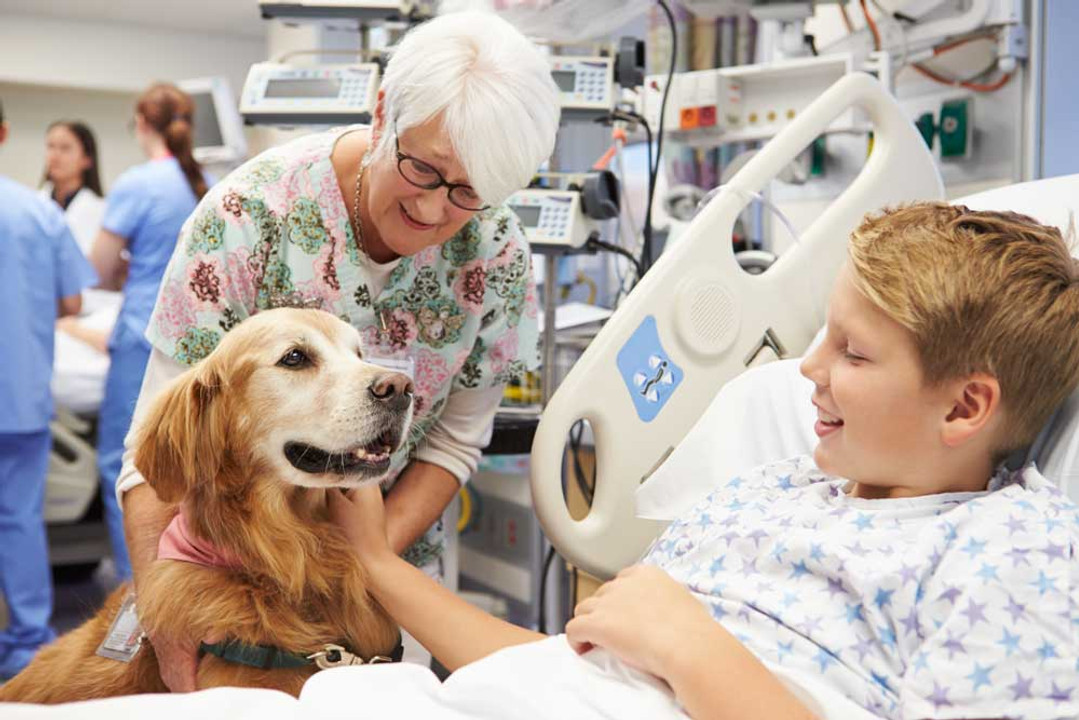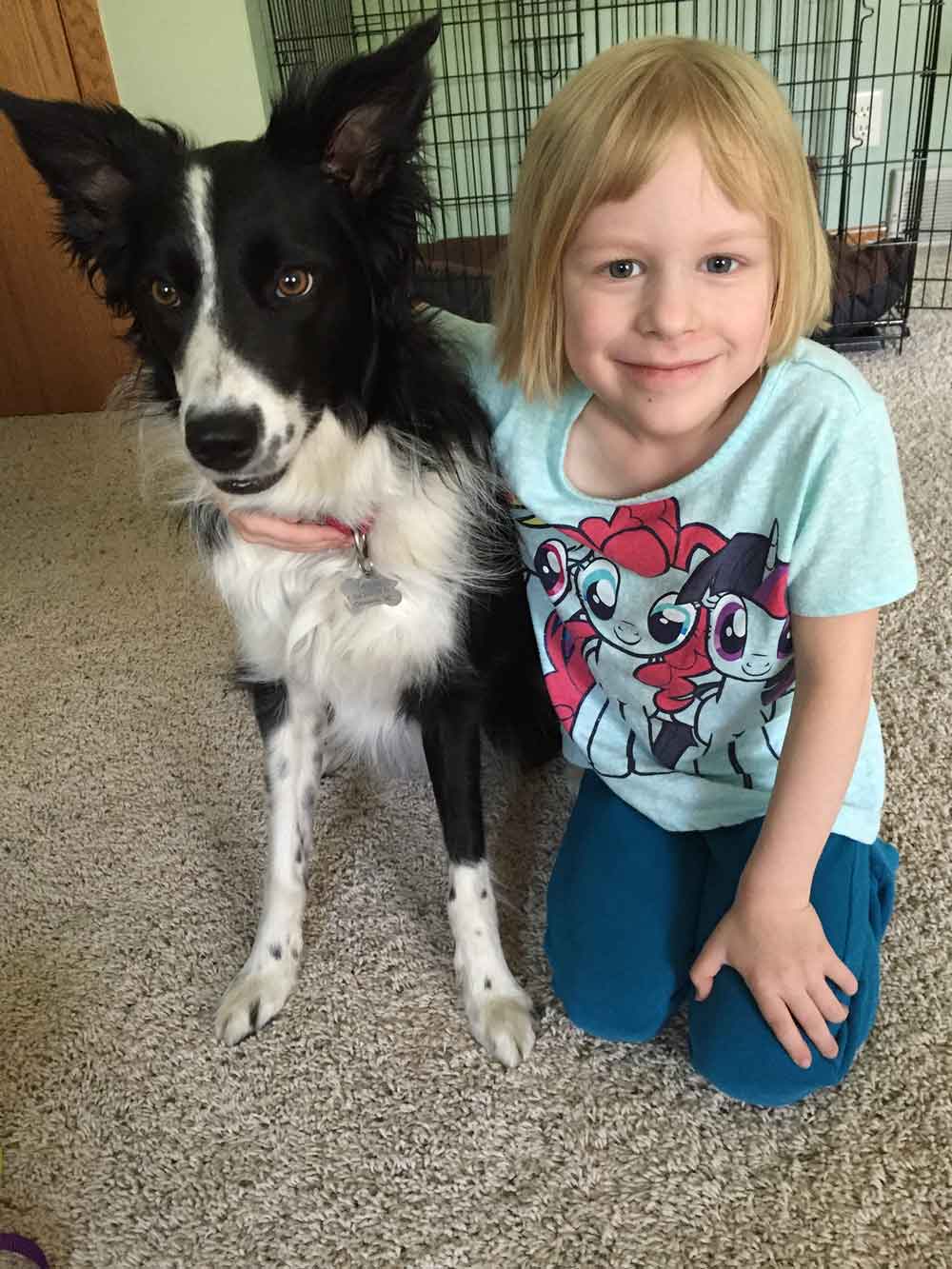How To Become A Therapy Dog - Minka's Story

What Does a Therapy Dog Do?
Therapy dogs are often confused with service dogs. Service dogs are specially trained from the time they are puppies to help humans with a wide variety of challenges such as visual impairment, diabetes, PTSD, seizures, etc. Service dogs live with the person that needs the help and usually accompany that person everywhere. Therapy dogs may or may not be trained, and bring comfort and joy to people in many situations. In this blog, you will learn about the benefits of therapy dogs and how your pet can become one.
To get firsthand knowledge of how the process works, we invited guest blogger Sarah Murphy and her newly minted therapy dog, Minka, to share what they learned.
Benefits of Therapy Dogs
The benefits of therapy dogs are amazing. People might experience physical changes like the lowering of blood pressure, or mental changes like lower anxiety. In schools, time with a therapy dog can be used to calm children with behavioral issues or even provide an incentive for students. Studies even show that when children read to a dog regularly (often called Read to Rover), the student’s confidence and reading level improve.
In nursing homes, therapy dogs can provide companionship, comfort, entertainment and even help in mobility of the residents. Sometimes colleges invite therapy dogs onto campus for de-stress events. Therapy dogs are often seen at hospitals, providing comfort and distraction for patients. The opportunities are truly endless.
Becoming a Therapy Dog
Any dog can be a therapy dog if they have the right temperament. From the smallest breed to the largest, as long as they are gentle and enjoy meeting new people, they might be able to do therapy. Some areas have organizations that set up visits and require some training before starting. The Canine Good Citizen(CGC) test is a very good place to start. If your dog can pass the CGC test, it’s a good general indicator that they may do well with therapy.When I was growing up, we had a dog that worked at the nursing home with my mom. I knew if I ever had a dog, I wanted to do therapy visits. Now we have a border collie, Minka, and we have joined our local pet therapy group.
From the time she was a tiny puppy, Minka sought out people. Whether it was someone visiting our house, or someone we passed on a walk or in the park - she always wanted to greet people. Even when we went to the dog park, she would say hello to all the people before playing. As she got older, I noticed she had a knack for seeking out people who needed a little extra love. She was very careful not to jump on kids.
When we visited my grandma in the nursing home, Minka would very carefully put her front paws on my grandma’s lap so that she was easier to pet.
We took several general obedience classes until Minka was old enough to try the Canine Good Citizen test. We had seven weeks of training and practice and took the test on week eight.
Additional Training
By the time we took the test, we had hours of practice to sit for petting, not jump on people, come when called and more. Our instructor took it a step further and included things that would happen on a therapy visit like finding kleenex on the floor, exposure to people in wheelchairs and walkers and sudden loud sounds. Once we passed the test, we had an interview with the therapy group director. It’s volunteer work, so as an owner, you have to want to do it, too!
Life as a Therapy Dog
Currently, we are trying out many different options to see what Minka likes best. We did a de-stress event at a local college, which Minka enjoyed for two hours straight. We just hung out in a student center and had a steady stream of 1-5 college students wander through to see her on their way to class. The students were less than a month into their year, many of them freshman and away from home for the first time. Some students were on their way to their first big tests of the semester, and I heard several times as Minka loved them up “This is just what I needed today!”
 Our director also encourages us to put our dog’s needs first. If we are signed up for a two-hour visit, and after 20 minutes the dog seems really stressed out or anxious, we make our apologies and leave. We don’t want the dog to start dreading the work or put them under any unnecessary stress. After Minka was stressed out by other dogs at the nursing home and we cut a couple of visits short, we decided it wasn’t the best option for her. It’s a learning process for both of us.
Our director also encourages us to put our dog’s needs first. If we are signed up for a two-hour visit, and after 20 minutes the dog seems really stressed out or anxious, we make our apologies and leave. We don’t want the dog to start dreading the work or put them under any unnecessary stress. After Minka was stressed out by other dogs at the nursing home and we cut a couple of visits short, we decided it wasn’t the best option for her. It’s a learning process for both of us.
Yesterday I told another therapy friend that I had let my daughter’s school know we could be available to do therapy visits, and the school counselor had asked me if there was a charge for the program. My friend and I laughed - not only is it free, but we would probably PAY to be able to do it!
When you love your dog, and your dog loves people, it can bring incredible joy to be able to share them with others. The chance to see how happy they make other people makes a couple hours of our time absolutely worth it!
Do you have a therapy dog? Check out our therapy dog tags, harnesses and leash.
Does your dog go out in the community and help others?
Explore Popular Articles
-
Homemade Flea, Tick & Mosquito Repellent for Dogs: A Natural Recipe for Pet Parents
Jun 13, 2025Beyond the Buzz and Itch: Protecting Your Pup from Mosquitoes, Fleas, and Ticks As pet parents, we w
-
Can My Dog Eat This? A List of Human Foods Dogs Can and Can't Eat
Jun 04, 2025As loving dog owners, we consider our furry companions members of the family. They share our homes,
-
How Long Are Dogs Pregnant - Tips for Care & Safety
May 15, 2025Congratulations! If you’re reading this, your furry friend is likely expecting a litter of pup




